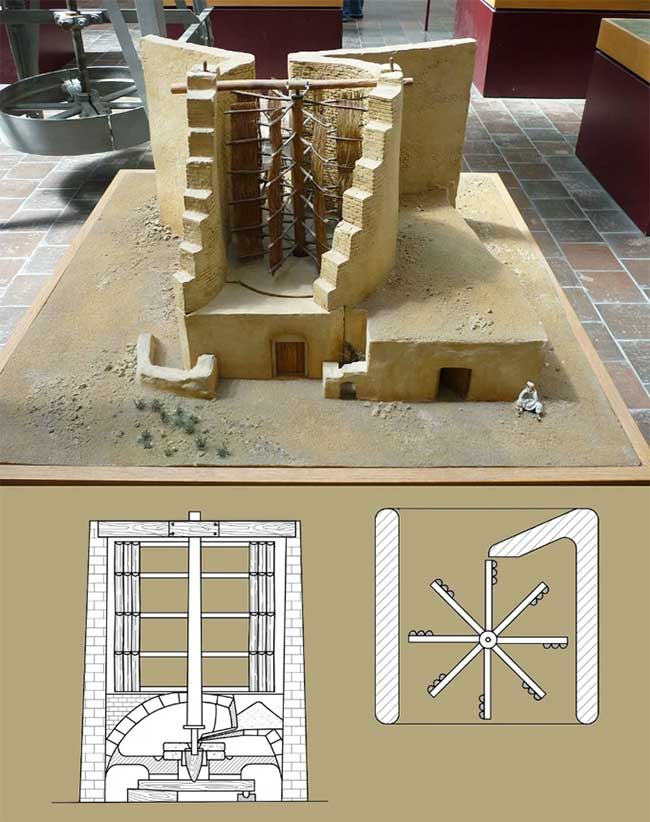Ancient Persians built windmills over 1,000 years ago, and they are still in use today.
One of the iconic ancient inventions that continues to be utilized today is the windmill.
Windmills were first invented in 634 AD, primarily used for grinding grain and draining water. One of the oldest windmills in the world can be found in Nashtifan, Iran, located about 30 kilometers from the Afghanistan border.
According to records, these vertical-axis windmills were constructed by ancient Persians more than 1,000 years ago.
In comparison to modern windmills, these structures appear quite peculiar with a vertical drive shaft and approximately 6 to 12 rectangular sails.
However, this is the original form of the windmill, marking humanity’s first discovery of how to harness the endless energy of the wind.

Principle of the Nashtifan windmill. (Photo: National Geographic).
The operation of the windmill begins when the wind blows into the wooden sails, causing the main shaft to turn and grind the grains. In this way, wheat is ground into flour without any human effort.
Over time, this model spread and became popular throughout the Middle East and Central Asia, later reaching China, India, and the rest of Europe.
Interestingly, although constructed from raw materials such as straw, clay, and wood, these windmills have remarkably endured over time.
To this day, after more than 1,000 years, even though they are not in the best condition, they can still be used to grind grains into flour.
In 2002, these windmills were classified by the Iranian Cultural Heritage Organization as one of the nationally significant historical and tourist sites.




















































